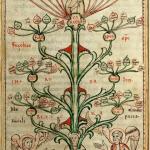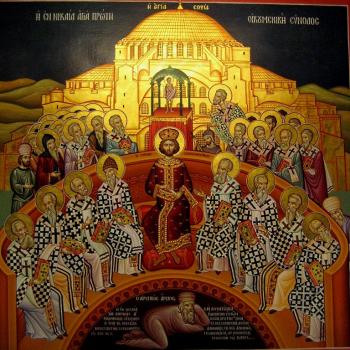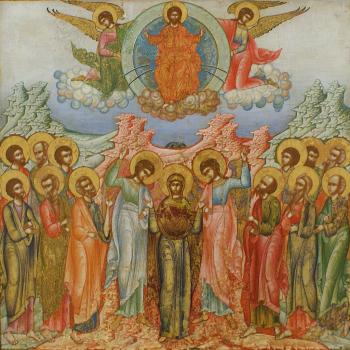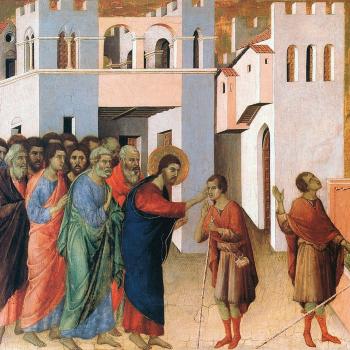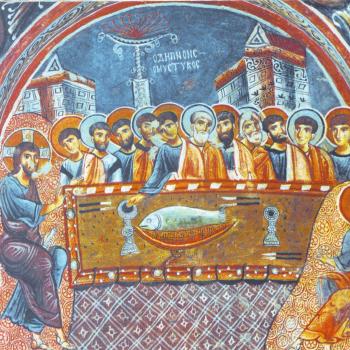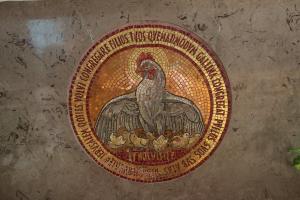
One of the most interesting images Jesus used for himself was that of a mother hen seeking to protect her brood:
O Jerusalem, Jerusalem, killing the prophets and stoning those who are sent to you! How often would I have gathered your children together as a hen gathers her brood under her wings, and you would not! (Matt. 23:37 RSV).
There are many elements which can be brought out of this text, each which could serve as a significant reflection in and of itself. Among them, first, is that this can be seen as one of many passages in which the divinity of Jesus is implied, for in and through it, we are shown that Jesus was the one who sent the prophets and looked after the people of Israel (which, of course, is what God did). It also shows us the way humanity in general, and not just the people of Israel, often responded badly to the pleas of God; for when prophets speak with God’s heartfelt compassion for those suffering from the sins of the people, they find their message is often rejected and they themselves join in with the suffering and injustices experienced by those whom they promote. We would be wrong in reading this statement as indicating that Jerusalem was exceptional in the way it mistreated the prophets and their cries for justice; rather, shows us how even the best of humanity, those who received many of the graces of God, could still stand against the pathos of God and fight against God when God calls them to promote social justice. However, what is of greatest interest in this reflection is the way Jesus referred himself as being a mother hen seeking to bring everyone together under her protection. As the great mother hen, Jesus (God) sought to call everyone to unity so that they would work and support each other. Jesus first did this through the various prophets sent into the world (and not just those sent to Israel), and then, through the incarnation, in person. And it was under this image we can and should understand Jesus’ passion, where Jesus willingly died for us so that we could be saved and live. Jerome brought this together in his own contemplations on this passage:
I had come as the hen to the shelter, but they received Me with hatred and malice. I had come as a mother, and they, as it were their own slaughter, slaughtered Me. ‘I am swept away.’ How is that? They persecuted Me; they rejected Me. They drove Me out of Nazareth, I went into Capharnaum; they drove me from Capharnaum; I went into Bethsaida, and they drove Me out of there. I went into Jerusalem; I wanted to stay with My people, and from there they drove Me out. They treated me just as if I were a swarm of locusts! What did I do? Was I angered? Did I defend Myself? Did I curse them? Did I abandon them? No, not any of that did I do. What did I do? I prayed for them. [1]
Jesus did not show anger to those who persecuted him – he loved them so much he even forgave them while they were persecuting him (cf. Lk. 23:34). Jesus engaged the world as the mother-hen, seeking to protect all her children, that is, all of us, all humanity. Jesus not only embraced motherhood, but embraced the fate of so many mothers – Jesus took on all the abuse, all the hate, all the spite, which many mothers have experienced throughout the ages, and made it his own. He made their burden, their pain and sorrow, his own. And by using this metaphor, by he implied that there was great evil which lay behind such abuse. Sadly, it would seem that Christians did not pay proper attention, which is why they continued to support and embrace those systems of thought and laws which promoted or at least defended such abuse.
The incarnation took place to save and deify fallen creation. However, the process of salvation and deification includes the purification of the world. Such purification cannot be had without overturning systematic injustices and the sin which creates them. We don’t fully embrace the work of Christ when we ignore him and the social justice concerns found throughout his ministry. Indeed, Jesus warned us that if we are privileged and use that privilege to cause others needless pain and suffering, we would have to face the consequences of our actions, consequences which we will not like:
But woe to you that are rich, for you have received your consolation. Woe to you that are full now, for you shall hunger. Woe to you that laugh now, for you shall mourn and weep. Woe to you, when all men speak well of you, for so their fathers did to the false prophets (Lk. 6:24-26 RSV).
Jesus, therefore, embraced the image of the mother hen to demonstrate his connection with and unity with all mothers who suffer great abuse from their loved ones or from society as a whole. Jesus lamented the fact that many not only would engage such abuse, but promote it and try to justify it, just as he lamented the way the prophets were mistreated because their message angered those who had wealth and power. Women, who held neither, experienced with great horror how the system treated them as readily expendable; they didn’t need the prophets, or Jesus, to know how terrible their situation was. And, despite all that they experienced, they still acted out of love, taking care of others, including and especially many who abused them, just as Jesus did when he forgave those who crucified him. This shows us what true love is like; it is longsuffering, and it is this love which Jesus wants us to understand so that we realize how and why he is so patient with sinners. Thus, it can be said that throughout the centuries, women, who were treated as lowly and insignificant, were spiritual giants; instead of losing their love, they find it growing greater, making them greater in return, while those who thought themselves great by the power they possessed, by the way they established an injustice system which beat women down and “kept them in their place,” were like those who killed the prophets – and Christ himself.
It is important to realize Jesus was not just associating himself with the plight of women. He affirmed that he was more than a mere man, a male; in him there is no separation between male and female, and so in him we find both, with Jesus taking on and identifying himself with both. That he identified himself as a woman, and not just as a man, is something which many women mystics knew and proclaimed, and so is something which is found in the greater Christian tradition, but alas, it is also something which has often been suppressed or ignored, as many try to think of Jesus as a male alone, doing so to support and promote the system of abuse which Jesus himself contended against.
[1] St. Jerome, The Homilies of Saint Jerome: Volume I (1-59 On the Psalms). Trans. Marie Liguori Ewald, IHM (Washington, DC: CUA Press, 1963), 263-4 [Homily 35].
Stay in touch! Like A Little Bit of Nothing on Facebook.
If you liked what you read, please consider sharing it with your friends and family!


